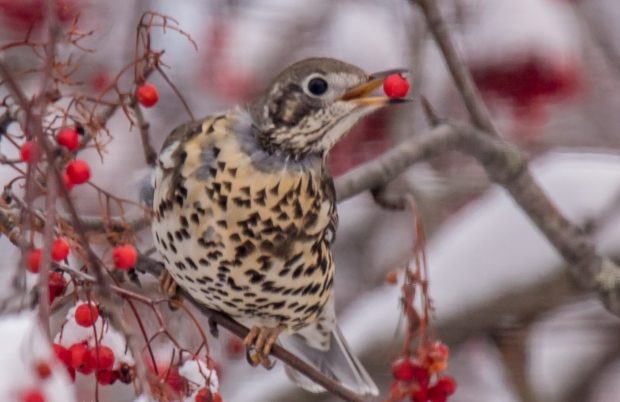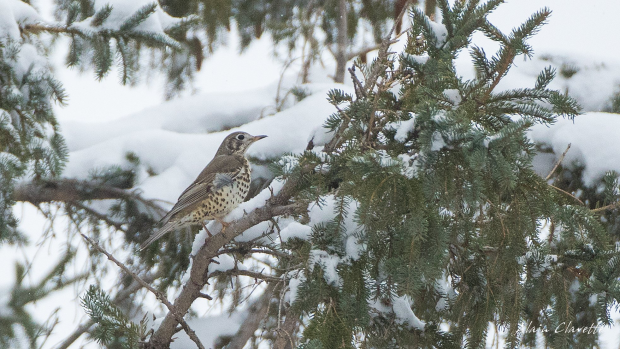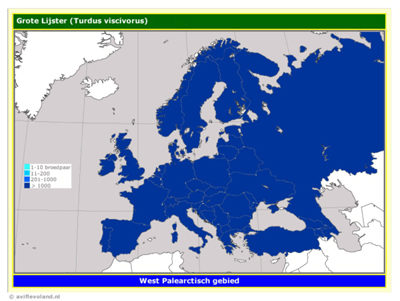
Peter Gadd said a European mistle thrush landed near a mountain ash tree on his lawn and has been drawing crowds ever since.
"I saw a bird and thought, 'OK, that's a little different,'" said Gadd, who spotted the bird on Saturday.
Gadd and his wife, Deana, have been active birders for more than four years.
After spotting the bird and carefully studying its features, Gadd tried to find something similar in one of his several North American bird books.
Nothing seemed to match.
So he sent photos to bird experts, who quickly recognized the rare bird.
"It doesn't get any rarer than this," said Jim Wilson, a New Brunswick-based birder and naturalist, who visited the Gadd residence.
The bird has been feeding on the berries from the tree in Gadd's yard and comes and goes as it pleases.
"This is the very first time a mistle thrush has ever been seen and recorded in North America ... it will draw people from all over the continent to come and see it if it hangs around," said Wilson.

"It's really quite amazing how far these migratory birds can fly in a single flight," he said.
"It's a long way from home."
The bird is about the size of a robin and has a brown-greyish back with pale underparts. It also has dark spots on its breast from the throat to its belly. The eyes are large, which keeps the animal alert.
"It basically looks like a washed-out robin," said Wilson.
What happens next?
Gadd said he hopes the bird will survive and remain in the area throughout the winter.
"Once it finds a food source it will aggressively protect it," Gadd said. "If it does do that with our mountain ash (tree) it could be here for some time."
Gadd said he even has raspberries, blueberries and plums on hand if it runs out of berries from the mountain ash tree.
As long as the bird can get a regular supply of food, it will likely survive.
Species of thrushes are often described as "hardy birds," Wilson said.




Reader Comments
to our Newsletter